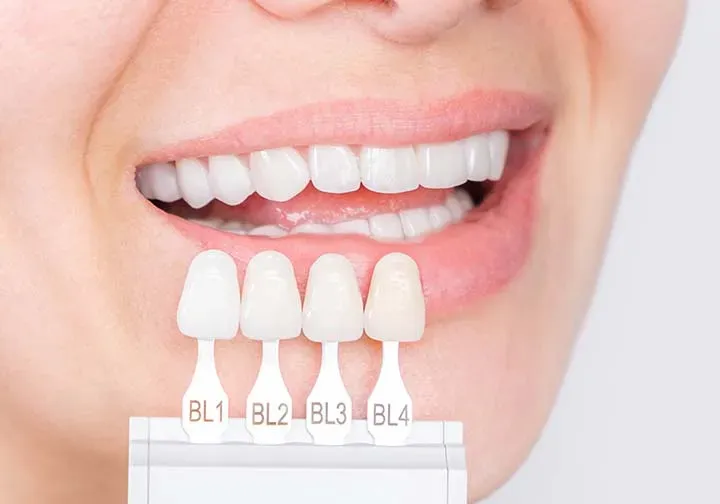Composite veneers have revolutionized the field of cosmetic dentistry, offering a quick, affordable, and non-invasive solution for those seeking to improve their smile. By understanding the science behind composite veneers, individuals can better appreciate how they work and the numerous benefits they offer. This article delves into the materials, the process, and the advantages of Composite Veneers for dental enhancement.
What Are Composite Veneers?
Composite veneers are thin layers of tooth-colored resin that are bonded to the front surface of teeth to correct imperfections and enhance the smile. The material used in composite veneers is a mixture of plastic resins and glass particles, giving it the strength and durability needed to withstand the forces of chewing while maintaining a natural look.
- Made of Resin and Glass: Composite veneers use a durable resin material mixed with fine glass particles for strength.
- Customization: Each veneer is shaped to fit the tooth it’s applied to, providing a personalized look.
- Lightweight and Strong: Despite being thin, composite veneers are designed to withstand daily wear and tear.
How Composite Veneers Work?
Composite veneers work by bonding a layer of resin directly to the front of the tooth. This resin is sculpted to correct imperfections such as chips, gaps, discoloration, and minor misalignments. The process is minimally invasive, requiring little to no alteration of the natural tooth structure.
- Direct Application: The resin is applied in layers and sculpted to the desired shape.
- Hardening with Light: A special curing light hardens the resin, ensuring a strong bond to the tooth.
- Precise Fit: The veneers are designed to fit the exact contours of your teeth, creating a seamless look.
The Benefits of Composite Veneers:
Composite veneers offer numerous benefits for those looking to enhance their smile without undergoing more complex or expensive dental procedures. Below are some of the key advantages:
- Cost-Effective: Composite veneers are more affordable compared to porcelain veneers, making them accessible for a larger population.
- Non-Invasive: The application of composite veneers typically requires minimal or no removal of the natural tooth structure, making it a less invasive option.
- Quick Results: In many cases, composite veneers can be applied in a single dental visit, providing immediate aesthetic improvements.
- Natural Appearance: The material used in composite veneers can be shaped and colored to match the natural appearance of your teeth, creating a seamless and beautiful smile.
The Application Process of Composite Veneers:
The application of composite veneers is a relatively straightforward procedure that can typically be completed in one dental visit. First, the dentist prepares the tooth by cleaning it and, in some cases, etching the surface for better adhesion. Then, layers of composite resin are applied and molded into the desired shape. After the resin hardens under a special light, the dentist fine-tunes the appearance of the veneer by polishing it to a natural finish.
- Cleaning and Preparation: The tooth is cleaned and sometimes roughened to ensure better bonding.
- Layer-by-Layer Application: The resin is applied in small layers and shaped to match the tooth.
- Final Touches: Once the resin is hardened, the veneer is polished to a smooth, natural-looking finish.
Longevity and Durability of Composite Veneers:
Although composite veneers are not as durable as porcelain veneers, they are still incredibly strong and can last for many years with proper care. The longevity of composite veneers depends on various factors, including the amount of wear and tear the veneers experience, oral hygiene practices, and lifestyle habits.
- Lasting Results: Composite veneers typically last between 5 to 7 years with proper care.
- Vulnerable to Damage: While composite veneers are durable, they can chip or stain over time, especially if subjected to excessive wear.
- Maintenance: Regular dental checkups and good oral hygiene can extend the life of composite veneers.
Composite Veneers vs. Other Dental Solutions:
Composite Veneers are often chosen over other dental solutions, such as porcelain veneers or crowns, because they offer an excellent balance of affordability, effectiveness, and ease of application. Compared to porcelain veneers, composite veneers are more budget-friendly and require less preparation of the natural tooth structure.
- Affordable Alternative: Composite veneers are typically less expensive than porcelain veneers.
- Less Tooth Removal: Unlike porcelain veneers, which may require the removal of a significant amount of tooth enamel, composite veneers are minimally invasive.
- Quick and Convenient: Composite veneers can often be applied in a single appointment, while porcelain veneers typically require multiple visits.
Conclusion:
Composite veneers are a remarkable solution for those seeking to improve their smile without the need for invasive procedures. By understanding the science behind composite veneers and their benefits, individuals can make informed decisions about whether this cosmetic dental option is right for them. Offering a quick, cost-effective, and natural-looking solution for a variety of dental imperfections, composite veneers can transform smiles and boost confidence.

